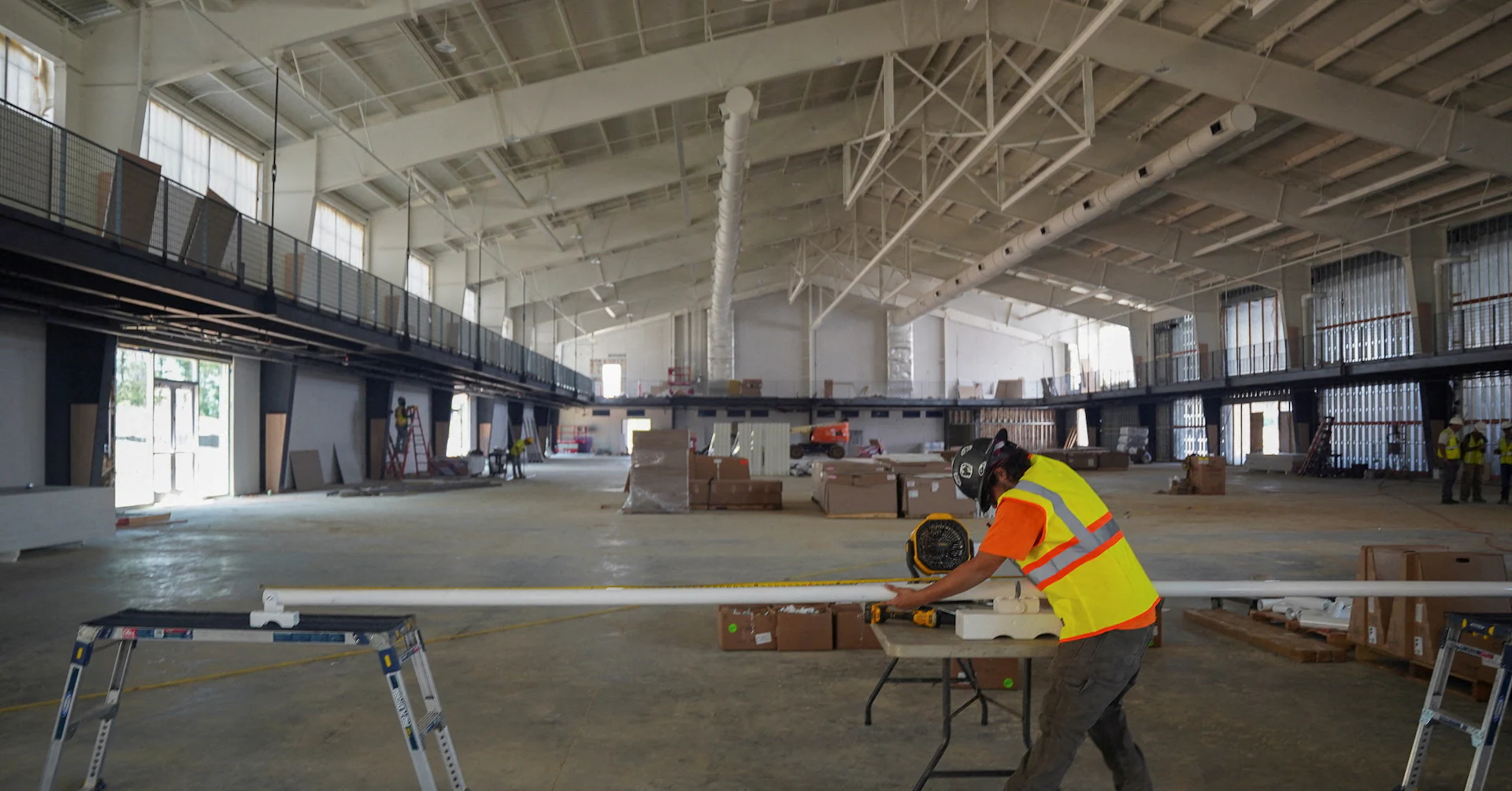
LONDON, Sept 30 (Reuters) – As we enter the final quarter of a turbulent 2025, one of the biggest puzzles of the moment is how the U.S. economy is growing at almost 4% without creating any jobs. The answer may lie in artificial intelligence, but proving that will be a challenge.
While U.S. markets suffered a near heart attack over President Donald Trump’s tariff plans in April, they have since roared back, with the S&P 500 rallying by a whopping 33% from its lows. Meanwhile, the U.S. economy is on track for 3.9% annualized GDP growth as the third quarter comes to a close.
Sign up here.
On top of this, the Federal Reserve has resumed easing, even in the face of the loosest financial conditions in almost four years. Why? Because Chair Jerome Powell and team are worried about the labor market.
So why is the labor market ostensibly so weak when the economy is booming, corporate capital expenditures are soaring and the stock market is racing to record highs?
While Q3 tallies for different cuts of stocks, bonds and even the dollar all showed positive plain sailing through the quarter, the eye-popping 60% rise in the so-called “Magnificent Seven” big tech megacaps from this year’s low returns us to a familiar culprit.
JPMorgan economists recently highlighted the 11% annualized capex growth through the first half of 2025, noting that this growth remained strong in the third quarter even as labor demand seemed to evaporate.
U.S. payroll growth – which will be updated with September data on Friday – has softened considerably to an average of only 29,000 jobs per month in the three months through August, compared with 82,000 during the same period in 2024.
“Accelerating capex amid a stall in job growth is hard to incorporate into the outlook,” JPM wrote late last week in a note titled “The odd decouple”. “Such a juxtaposition is not evident over any U.S. expansion in the past 60 years.”
Taken at face value, some cuts of the labor market are flashing a recession signal – one that equity and credit markets seem to be dismissing out of hand even if Fed officials seem spooked.
TS Lombard economist Dario Perkins recently spotlighted a chart that he says “terrifies the Fed”, which shows that the six-month change in “core” U.S. payrolls – excluding government and healthcare jobs – is near zero. A negative reading of this measure has preceded every recession over the past 60 years.
“The Fed is doing what it always does when employment stops growing – panicking about ‘stall speed’,” Perkins wrote.
60-YEAR PUZZLE OR PERFECT SYNCH?
So why isn’t the stock market bothered?
It’s partly because investors think the Fed will now move fast to ease monetary policy to head off the problem and also that jobs picture is down to immigration reversals and productivity gains, and the Fed will ease anyway just in case.
The JPMorgan team puts forward two possible narratives to explain the dichotomy between booming capex and stalled jobs growth.
The optimistic view is that AI and other new tech is being implemented successfully, allowing hiring to slow along with the falling labor supply.
That sort of precise macroeconomic syncing seems improbable. Still, it does chime with the immigration curbs and deportations that have reportedly pushed the “breakeven” payroll growth – the monthly jobs gain consistent with an unchanged unemployment rate – below 50,000.
And that’s why some economists now think the monthly payroll report could soon turn negative without necessarily scaring financial markets.
By contrast, JPMorgan’s alternative pessimistic take on the decoupling of jobs and capex is that the drop in hiring reflects broad business caution, while capex growth is in the final throes of a narrow AI-led boom that’s set to fade.
If that’s true, then a slowing labor market may start to weigh on household purchasing power, compounding the hit from any import tariff- and dollar-related inflation.
The final quarter of the year may not fully resolve this issue, of course.
For one, a possible government shutdown may mean we may have to wait weeks to even see the full September jobs report that will either confirm or negate the Q3 trend.
It’s unlikely to provide a satisfying answer to the current economic conundrum, however, as some slowdown in the AI capex spend seems inevitable. How long the apparent contradiction of hesitant hiring and confident company investment can coexist in the interim will likely remain the dominant question of the final quarter.
The opinions expressed here are those of the author, a columnist for Reuters
– Enjoying this column? Check out Reuters Open Interest (ROI), your essential new source for global financial commentary. Follow ROI on LinkedIn. Plus, sign up for my weekday newsletter, Morning Bid U.S.
by Mike Dolan; Editing by Marguerita Choy
Our Standards: The Thomson Reuters Trust Principles., opens new tab
Opinions expressed are those of the author. They do not reflect the views of Reuters News, which, under the Trust Principles, is committed to integrity, independence, and freedom from bias.



